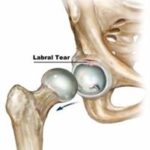Carpal Tunnel Syndrome (CTS)
Ever felt like your hands have a mind of their own numb one moment, tingling the next, and suddenly letting go of your coffee mug? If that sounds familiar, there’s a good chance you’re dealing with Carpal Tunnel Syndrome (CTS). It’s sneaky, frustrating, and often misunderstood.
Whether you’re typing away at a keyboard, driving long hours, or gripping tools day in and day out, this condition might come knocking. But here’s the kicker: it doesn’t just mess with your hands. It can affect sleep, productivity, and overall quality of life. The good news? You’re not stuck with it.
Let’s dive deep into the world of wrist-related nerve issues and figure out what’s really going on inside your hand, what you can do about it, and how to keep it from coming back.
What Is Carpal Tunnel Syndrome (CTS) Anyway?
To put it plainly, this condition occurs when the median nerve, which runs from your forearm into your palm, gets squished or compressed at the wrist. This nerve passes through a narrow passage called the carpal tunnel, and when that space becomes too cramped bam! you get symptoms like tingling, numbness, and weakness in the hand.
But hold up this isn’t just about your wrist acting up. That tiny nerve controls sensation and muscle movement in parts of your hand, especially the thumb, index, middle, and part of the ring finger.
What Causes It?
Now, wrist nerve compression doesn’t just show up out of nowhere. Something’s gotta give. Here are the usual suspects:
Repetitive Motions
- Typing, texting, or using a mouse for long periods
- Using vibrating tools or doing repetitive tasks like assembly line work
Wrist Anatomy
- Some folks are just born with a narrower carpal tunnel
- Prior injuries like fractures can change the tunnel’s shape
Medical Conditions
- Diabetes
- Hypothyroidism
- Rheumatoid arthritis
- Pregnancy (due to fluid retention)
Lifestyle Habits
- Poor posture while working
- Sleeping with bent wrists
- Using poorly designed ergonomic setups
Bottom line? Anything that increases pressure on the median nerve inside the wrist can trigger trouble.
Symptoms of Nerve Compression in the Wrist
Wondering if what you’re feeling is this condition? Here’s what it typically looks and feels like:
- Numbness or tingling in the thumb, index, and middle fingers
- Burning or shock-like sensations in the hand
- Weakness or clumsiness when holding objects
- Wrist pain that sometimes creeps up to the shoulder
- Nighttime discomfort—often worse when trying to sleep
And just to make it more fun (not), the symptoms often come and go at first making you think it’s no big deal until one day you can’t even button your shirt.
Diagnosing the Issue: Time to Get Checked
If those symptoms sound all too familiar, don’t wait. This condition doesn’t fix itself. Your doctor or physiotherapist may:
- Ask about your symptoms and daily activities
- Perform physical tests like Phalen’s Test or Tinel’s Sign
- Order nerve conduction studies or EMG to confirm the diagnosis
Remember, early detection = easier treatment. So don’t shrug it off.
Treatment Options
Alright, so you’ve got a confirmed diagnosis now what? Luckily, there’s more than one way to tackle it.
1. Conservative (Non-Surgical) Treatments
If your symptoms aren’t too severe, these approaches often do the trick:
- Wrist splints (especially at night) to keep your hand in a neutral position
- Physiotherapy to stretch and strengthen the muscles around the wrist
- Ergonomic changes at work to reduce strain
- Anti-inflammatory meds to reduce swelling and discomfort
- Ice packs to ease inflammation
2. Corticosteroid Injections
Still struggling? Your doctor may recommend a steroid injection to calm things down inside the tunnel. It’s not a long-term fix but can offer relief when things flare up.
3. Surgery (When All Else Fails)
In severe or chronic cases, carpal tunnel release surgery may be needed. The surgeon cuts the ligament pressing on the nerve to relieve pressure. It’s usually quick and has a high success rate, but recovery can take a few weeks.
How Physiotherapy Helps
Ah, physiotherapy, the unsung hero of non-surgical treatment. A good physiotherapist doesn’t just focus on the wrist. They’ll look at your entire upper limb to find any contributing factors.
Here’s what therapy might include:
- Manual therapy to improve wrist joint mobility
- Nerve gliding exercises to free up the median nerve
- Strength training for hand and forearm muscles
- Posture correction to take the pressure off your wrists
- Education on how to avoid aggravating movements
This holistic approach often leads to faster healing and fewer flare-ups.
How to Prevent It Before It Starts
They say prevention is better than cure, and they weren’t wrong. Here’s how to stop wrist nerve trouble in its tracks:
- Take regular breaks from repetitive tasks
- Use ergonomic keyboards, chairs, and workstations
- Avoid bending your wrists too much (especially while sleeping)
- Stretch your hands and wrists daily
- Strengthen your grip and work on upper body posture
Small changes can make a big difference, especially if your job keeps you glued to a desk.
FAQs
Q: Is this condition permanent?
A: Not necessarily. Early treatment can reverse symptoms. But if ignored, it can lead to permanent nerve damage.
Q: Can it go away on its own?
A: Mild cases sometimes improve with rest and activity modification. However, most people need treatment to fully recover.
Q: How long does recovery take after surgery?
A: Most people recover in 6–12 weeks, but full strength might take a little longer depending on the severity.
Q: Will I need surgery for this?
A: Not always. Many cases respond well to physiotherapy and conservative care.
Q: Can exercise worsen the symptoms?
A: The wrong exercises might. That’s why a physiotherapist’s guidance is key; they’ll show you safe, effective moves.
Conclusion: Don’t Let This Nerve Issue Take Over Your Life
This condition might be a pain literally but it doesn’t have to control your life. Whether you’re an office worker, musician, gamer, or weekend DIY-er, your hands deserve better than numbness and frustration.
Pay attention to the early signs, tweak your daily habits, and don’t be afraid to seek help. With the right mix of care, especially physiotherapy, you can restore comfort, strength, and control in your hands.
So, if your wrists have been crying for help, maybe it’s time you listened. The good news? It’s totally beatable.











